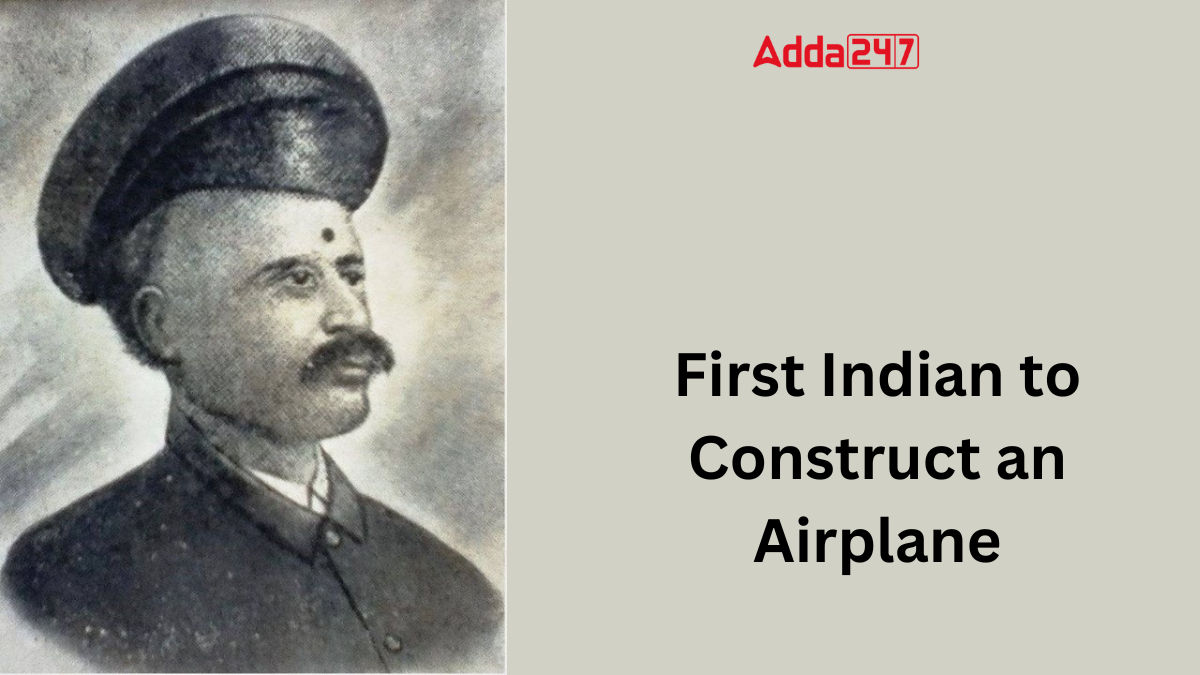Shivkar Bāpuji Talpade is often credited as the first Indian to construct an airplane. Born in 1864 in Mumbai, Talpade’s efforts to build and fly an unmanned aircraft named Marutsakhā in 1895 are notable. This event occurred eight years before the Wright brothers achieved their milestone in 1903. Though not widely accepted in mainstream aviation history, Talpade’s story is a fascinating blend of ancient texts, modern inspiration, and Indian innovation.
Early Life and Inspiration of First Indian to Construct an Airplane
Shivkar Bāpuji Talpade was born in Mumbai and lived in Dukkar Wadi (now called Vijay Wadi), Chira Bazaar. He was a scholar of Sanskrit and the Vedas, and belonged to the Pathare Prabhu community, one of the earliest settlers of Mumbai. Talpade completed his schooling at the Sir Jamsetjee Jeejebhoy School of Art, where his interest in ancient Indian aeronautics was sparked by his teacher Chiranjilal Verma. He further delved into the works of Swami Dayanand Saraswati and ancient Vedic texts, such as the Rigvedādic Bhāshya Bhumikā and the Yajurveda Bhāshya. These texts inspired Talpade to explore the concept of Vimāna, the ancient flying vehicles described in the Vedas.
Construction of Airplane, Marutsakha
Talpade’s aircraft, named Marutsakhā, is derived from the Sanskrit words Marut (meaning “air” or “wind”) and Sakhā (meaning “friend”), translating to “Friend of Wind.” He based his design on descriptions of flying machines (Vimānas) found in ancient Hindu mythology. Alongside ancient texts, Talpade was also inspired by the works of contemporary aviation pioneers, including Thomas Alva Edison and Hiram Maxim, whose experiments with steam-driven aircraft and balloon flights further motivated him.
The Flight of Marutsakha
The flight of Marutsakhā is believed to have taken place in 1895 at Mumbai’s Chowpatty Beach. According to some accounts, this unmanned aircraft, powered by what is thought to be a form of Vedic ion technology, ascended to a height of 1,500 feet before descending back to the ground. The event was reportedly witnessed by prominent figures such as Mahadeva Govinda Ranade, an Indian judge and nationalist, and Sayajirao Gaekwad III, the Maharaja of Baroda. Although Marutsakhā did not operate at full capacity due to technical limitations, the flight was still considered a remarkable achievement at the time.
Doubts and Challenges to the Flight
Despite these accounts, there are few verifiable records or substantial evidence of Talpade’s flight. Researchers at the Indian Institute of Science in Bangalore have questioned the technical feasibility of constructing such an airplane, and modern studies debunk the possibility of Vimāna-based technology being capable of actual flight. Nonetheless, accounts by Talpade’s student, Pt. S. D. Satawlekar, and other sources suggest that the aircraft did achieve some level of success, even if for a short duration.
Legacy of Shivkar Bapuji Talpade
After the flight, the aircraft reportedly remained at Talpade’s home, where it became a family relic. His niece, Roshan Talpade, recalled that they would sit inside the aircraft’s frame and imagine flying it. Today, a model reconstruction of Marutsakhā has been exhibited in Mumbai, and documents related to the experiment are preserved by Hindustan Aeronautics Limited.




 Which Indian City is Known as the Footwe...
Which Indian City is Known as the Footwe...
 Which Desert is known as the Cold Desert...
Which Desert is known as the Cold Desert...
 Top-10 News Media Companies in the World...
Top-10 News Media Companies in the World...







